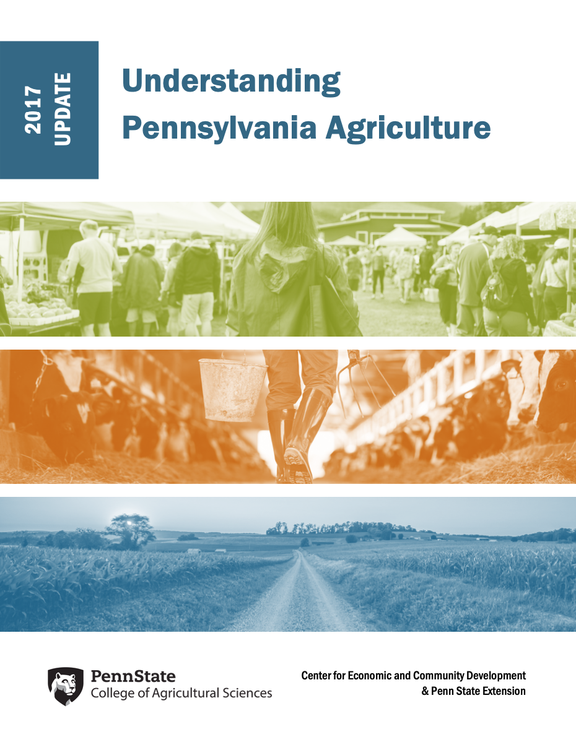Food Systems Transformation Research
Approximately 12 percent of Pennsylvania residents face food insecurity, meaning they have limited or uncertain access to food. In 2023, a team of CECD-affiliated researchers conducted a study to understand the challenges and barriers that the emergency food system faces in serving Pennsylvania residents. This series of briefs presents main findings from 120+ interviews with food banks, food pantries, and residents across Pennsylvania. Each brief connects findings to concrete policy and program recommendations to reduce food insecurity in Pennsylvania.

This summary report introduces the key themes that emerged from listening sessions and interviews about the experience of food insecurity among residents in Clairton, Duquesne, and McKeesport, PA. This project began in 2021 and is a collaboration between faculty, staff, and Extension educators from Penn State and local advocacy organizations including Take Action Advocacy Group, and, formerly, the Black Women’s Policy Center.

Entrepreneurial Ecosystems Research Briefs
This research initiative examines the dynamics of entrepreneurial ecosystems in rural and micropolitan areas of Pennsylvania, focusing on how anchor economies and institutions shape economic development, support entrepreneurship, and impact community resilience in the North Central Pennsylvania/Pennsylvania Wilds, Hazleton, and Berks regions. It also explore the role of the Invent Penn State LaunchBox Network, an initiative aimed at fostering entrepreneurship and innovation across the Commonwealth.
PDF document, 3.2 MB
PA Population Dynamics
View our Population and Demographic Change Reports (2010-2020) and PA County Profile Reports (2019) for all 67 PA counties. These reports include figures, tables, and discussion questions to help contextualize population information and stimulate conversations about opportunities, challenges, and changes in your county.
PDF document, 2.2 MB
The Norris Square Neighborhood Profile is a community engagement effort that originated from community conversations. During these meetings, it became clear that many of the people we spoke with wished for a common language and more information about the neighborhood to assist with community improvements, grant writing, and program planning. Visualizing data from the US Census Bureau, this profile looks at culture and demographics, educational attainment, and housing characteristics in the neighborhood and is designed as a discussion tool.

This report series explores recently released 2020 decennial census data from the U.S. Census Bureau to look at key population changes and demographic shifts that occurred over the past decade at the state and county levels. These reports include figures, tables, and discussion questions to help contextualize population information and stimulate conversations about demographic change in your county. These reports are created in partnership with the County Commissioners Association of Pennsylvania (CCAP) and the CECD's Cristy Schmidt, Penn State Extension applied research educator, who currently serves as CCAP Extension fellow.

This series of county profile reports is intended to help you identify the opportunities and challenges that your county faces. Each county report reviews important population, quality of life, economic, and agricultural information.

PA Election Process Resources
This package of materials was developed to be used by counties to help inform and engage the public in the process of elections. Consider utilizing and sharing the quick guide and related social media and print materials to help spread the word! Developed by the County Commissioners Association in Partnership with Penn State Extension and Penn State’s Center for Economic and Community Development
A quick guide for understanding election administration, election security, poll workers, primary election, and voting for the first time in Pennsylvania

ZIP Archive
Downloadable GIFs, infographics and story slides for social media and public engagement

ZIP Archive
Download the complete print infographics toolkit (zip file)

PA Agriculture Analysis (2017, 2012 Census of Ag)
These reports look at trends in Pennsylvania agriculture. Data in each report comes from the USDA’s Census of Agriculture.
PDF document, 9.9 MB
Using maps and figures, this report provides a graphic update on the number of farms, land in farms, agricultural product sales, farm incomes, and information on farm operators by county in Pennsylvania in 2017.

PDF document, 1.6 MB
Agriculture in Pennsylvania is diverse. However, the major differences in farm size often are overlooked when people discuss Pennsylvania farming, as is the important role played by the Commonwealth’s smallest farms. This report explores key characteristics of Pennsylvania's small farms, including where they are, what they produce, how much they sell, how much land they use, and who operates them.

PDF document, 902.9 KB
Small farms in Pennsylvania are often overlooked when people talk about agriculture. Though small farms far outnumber larger farms, they contribute relatively little to total agricultural production in Pennsylvania. Narrowly focusing on the value of their agricultural sales misses the reasons many small farms are operated and the important roles they play. This report explores the roles that Pennsylvania small farms play within the agricultural and statewide economy.
PDF document, 3.4 MB
This report examines agricultural land use in PA, including how much farmland is in the state and in each county and how that land is used.

PDF document, 1.3 MB
This report explores the age of producers in PA, including how age varies across farm size, market value of ag sales, and types of agricultural production.
PDF document, 1.4 MB
This report looks at differences between male and female producers in PA in terms of how much they sell, where they produce, and what they produce.
PDF document, 2.7 MB
This report, featuring many maps and graphs, looks at major trends in Pennsylvania agriculture using data from the 2012 Census of Agriculture.
PA Economic Analyses (including COVID-19 analysis)
Reports explore how certain social and environmental events contribute to the economic profile of a place.
These reports looks at how unemployment claims varied across PA’s economic sectors and by race, sex, and age during the early phases of the COVID-19 pandemic.
These reports explore economic trends in communities and employment sectors throughout Pennsylvania. Reports include multiple analyses of how market trends and business decisions alter the economic and social landscape of a given community.

